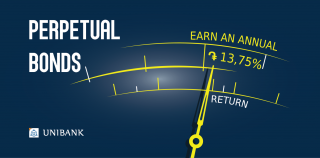
Armenia’s Debt

Week’s crucial economic information, no matter how strange it may sound, was political on its grounding. Civil Contract Party released a statement that it has launched a process of independent audit of Armenia’s external debt. Armenia’s state debt hasn’t been in the center of public attention for a long time. The first attempt of public discussion on state debt was in 1998.
After the regime change the then Prime Minister Armen Darbinyan obliged loan offices to submit reports to the Parliament. This was the first, and unfortunately, the last case, when the executive power tried to submit a report for every loan on country’s external debt.
It should be noted that this process was accompanied by numerous technical shortcomings. Firstly, a common form of report hasn’t been adopted. Accordingly, each office submitted reports not contradicting its interests. Every office concealed what was crucial for it. The Parliament of 1998 didn’t launch interested discussions. Political situation wasn’t beneficiary in its turn; everybody was busy with the forthcoming elections. Thus, interest on Armenia’s debt, and especially towards external debt, faded for about a decade. Lack of interest, to some extent, was in line with the country’s economic condition. The debt was growing slowly and scarcely.
From 1998 to 2008 the debt reached to USD 1 billion 900 million. The second and the last case of interest towards the country’s debt was recorded in 2010. Global economic crisis was threatening the world. And our authorities, as you remember, were assuredly hoping it would bypass us. When economic indicators for 2010 were concluded, it turned out, that throughout two years the country’s deb has recorded double growth, comprising USD 3 billion 800 million.
At that period everybody got a bit anxious. Country’s economy was reducing. Economic authorities were explaining it by unfavorable world economic implications. Instead, the debt was still growing. The Parliament, as usual, was discussing and stating on its inadmissibility. It was discussing and adopting another loan draft bill. To say there was any interest towards the country’s debt, would be an exaggeration. As the country’s debt didn’t ever undergo uneven changes. However, it was growing slowly (to some sense, rather slowly), but constantly. In 2011 Armenia’s debt comprised USD 4,1 billion, in 2012—USD 4,3 billion, in 2013—USD 4,6 billion. And in 2014 it decreased a bit, comprising USD 4,4 billion.
The Government began touching upon the fact that it has become very cautious regarding taking loans. However, many people hurried to draw a conclusion that international financial structures and creditor nations became cautious, i.e. our possibility of loan repayment approximated to the index of being assessed as risky. Accordingly, it’ll be difficult for us to take a loan. To be more exact, it’ll be difficult to convince someone allocating a loan. In late 2015 it turned out that Armenia’s debt comprises USD 4,7 billion. Structurally the picture is the following: RA Governmental debt comprises about USD 4,2 billion, and that of Central Bank of Armenia—USD 505 million.
After 1990s, economy has changed the indices of debt/GDP ratio. Currently people specialized in economy don’t even know that in the 90s having a debt of 40% of GDP was assessed as risky, and exceeding the 50% was formulated as hopeless. For the time being even developed countries may be found, debt of which exceeds the GDP, even more than once. Accordingly, it may be stated that volume of acceptability of the country’s debt is political to some extent.
It’s much more important to find out for which programs loans have been engaged, who decided priority of those programs and how involved means have been expended. Just from this very standpoint, it’s not surprising that one of the country’s political organizations proposes to launch public discussions on establishing a commission for implementation of independent audit.
And that commission will reply to three questions. First—clarify “grounds for debt generation.” In fact, process of ratification of 1-2 loan agreements needs analyzing. Second—“analyze productivity of investment of loan funds.” Truly enough, our society has never been provided with independent expert analysis of loan investment. Public opinion is leading that our authorities have taken money from those they succeeded to convince, and it was never important for which program is was being implemented. The third point is more ambitious—“develop a program for possible steps directed to rectify the situation.” If these three points are conscientiously implemented, we’ll have a serious document. At least on economic level. Despite the attitude of the authorities or political powers.
By Ara Galoyan























